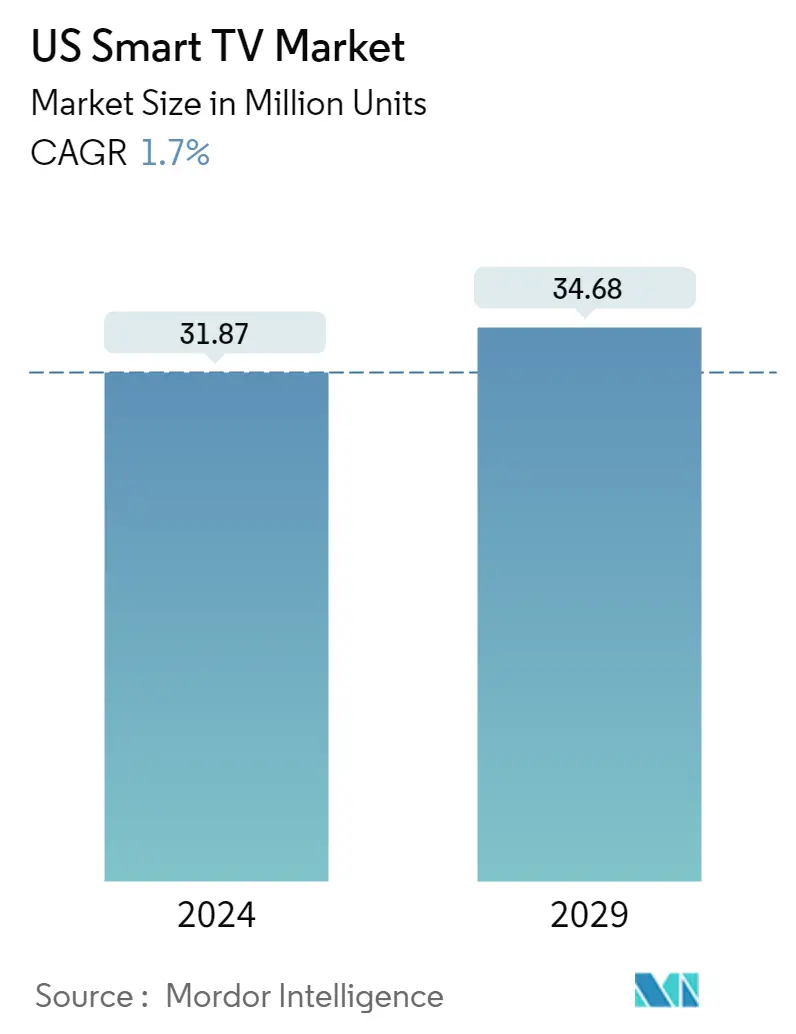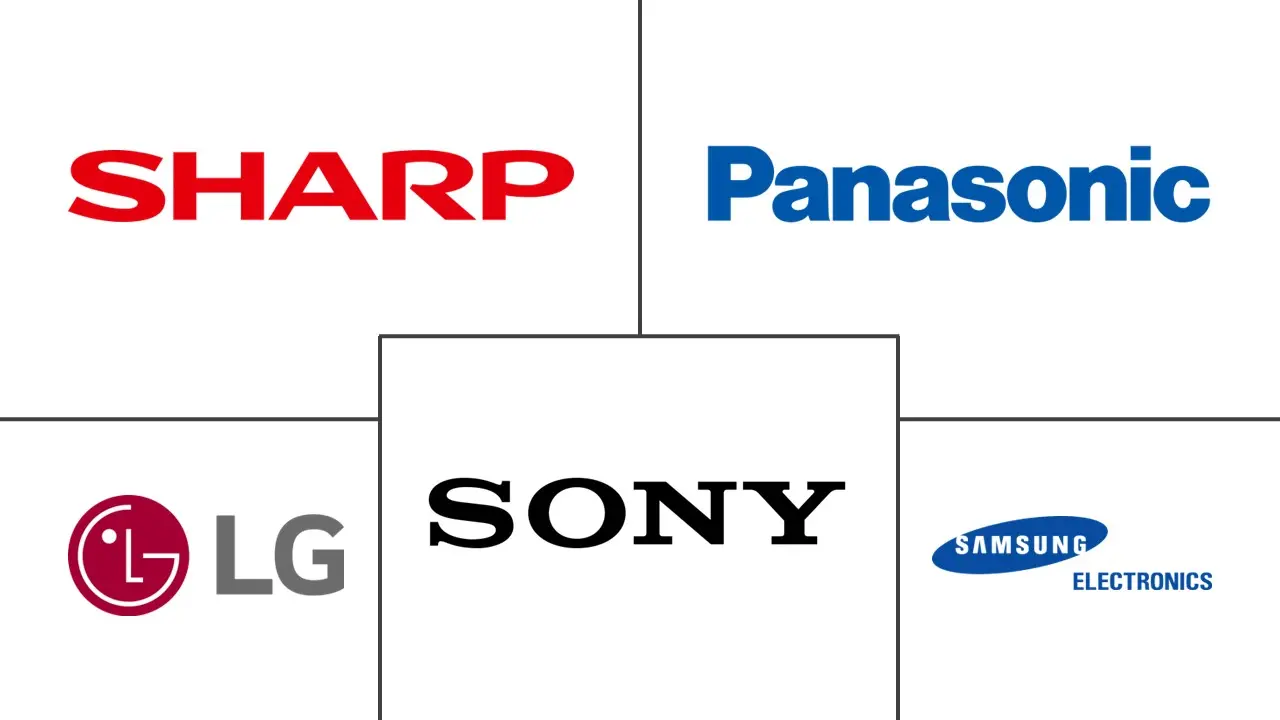Market Size of US Smart TV Industry

| Study Period | 2019 - 2029 |
| Base Year For Estimation | 2023 |
| Market Volume (2024) | 31.87 Million units |
| Market Volume (2029) | 34.68 Million units |
| CAGR (2024 - 2029) | 1.70 % |
| Market Concentration | Low |
Major Players
*Disclaimer: Major Players sorted in no particular order |
Need a report that reflects how COVID-19 has impacted this market and its growth?
US Smart TV Market Analysis
The US Smart TV Market size is estimated at 31.87 Million units in 2024, and is expected to reach 34.68 Million units by 2029, growing at a CAGR of 1.7% during the forecast period (2024-2029).
The increasing adoption of OTT services leading to the preference of smart TVs as a typical streaming entertainment product and the Us-China trade dispute prompting smart TV vendors dependent on Chinese manufacturing to expand shipments for building safety stocks are the two major factors driving the growth of smart TV in the United States.
- Streaming media such as Apple TV, Amazon Fire TV, and Google Chromecast are changing the consumers' viewing experience. Several manufacturers are teaming up with OTT (over-the-top) content and device providers to provide built-in features with no further requirement of a set-top box. For instance, TCL Corporation has teamed up with Roku Inc. and introduced a 4K HDR Roku TV.
- Furthermore, viewership of online material has expanded dramatically in recent years as high-speed broadband access has increased. Furthermore, the expanding electronics sector has started merging different technical advancements, including voice command and computational intelligence, with growing demand for intelligent gadgets, including smart TVs.
- Additionally, the increasing product development by major market players is expected to contribute to segment growth over the study period. For instance, in March 2022 - LG Display first introduced a 77-inch 8K OLED TV panel with MLA technology at the Society for Information Display's (SID) Display Week 2022, which was held in San Jose, California, on the 10th (local time) for three days. LG Display's 77-inch 8K OLED TV was the first in the world to use EX technology and MLA.
- Further, an ever-expanding universe of video streaming services, each with its exclusive TV shows and movies, is attracting a growing audience. According to the Consumer Technology Association, spending on video streaming services reached USD 47 billion in 2022, a 7% increase over 2021.
- For instance, 2021 saw 8K TV makers get into gear. Alongside the usual trio of 8K resolution screens from Samsung 8K TV, such as QN900A, QN800A, and QN700A, LG also brought several 8K-capable models that feature their Mini LED technology. Other brands are also launching, such as TCL's 6-Series 8K QLED, proving the cheapest 8K TV in the United States.
- Moreover, the increasing penetration of ultra-high-speed internet and highly efficient network infrastructure are expected to favorably impact the Smart TV Resolutions. For instance, the US federal government plans to build a centralized 5G wireless network nationwide by 2021. Recently, the White House released its National Strategy to Secure 5G in the US, mainly focusing on upgrading and securing 5G infrastructure at home and abroad.
- The COVID-19 pandemic has drastically impacted the lifestyles and routines of all consumers. Shelter-in-place orders and work-at-home mandates have driven in-home video consumption to unprecedented levels. The growing number of smartphone users in emerging economies has acted as a significant catalyst for smart TV as users look to continue their streaming content consumption on more giant screens when at home.
